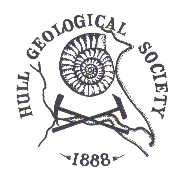

The Flamborough Quaternary Research Group
abstract for
SEDIMENTOLOGY – PROCESS AND PRODUCT.
Held 5th to 7th October 2012 at
Hull University.
A
joint meeting of the Hull Geological Society, University of Hull Department of
Geography and the Yorkshire Geological Society.
The
Palaeo-Valley Fill Sediments Of Flamborough Head Rediscovered: Their
Significance For Dating The Advance Of The North Sea Lobe Of The Last
British-Irish Ice Sheet Into Holderness, Eastern England.
Ian
Heppenstall, Colin Clark, Rodger Connell, Derek Gobbett, Dennis Haughey, Mike
Horne, Stuart Jones, Brian Kneller, Chris Leach, Paul Richards, & Rod Towse of
the Flamborough Quaternary Research Group, Hull Geological Societ.
Holderness, East Yorkshire, contains the typesite of
the Dimlington Stadial of the Late Devensian glaciation of the UK (a time from
ca. 28,000 to 14,700 cal years BP). At Dimlington the base of the Skipsea Till
(the older of two Late Devensian tills) can be seen above the radiocarbon dated
Dimlington Silts (22.0 ± 0.5 and 21.8 ± 0.3 cal. ka BP. (Hughes
et al., 2011)). The base of the
Skipsea Till can also be seen at the classic site of Sewerby, near Bridlington,
where it overlies periglacial sediments and an important sequence of last,
Ipswichian, interglacial (MIS 5e) deposits. At Eppleworth, west of Hull, close
to the ice sheet limit weathered Skipsea Till overlies a silt rich gelifluction
deposit TL dated to 17.5 ± 1.6 ka BP. See Catt (2007) for the most recent review
of all three important sites.
The two Late Devensian, till units of Holderness, the
Skipsea and Withernsea Tills, were deposited by multiple advances of the North
Sea Lobe of the last British-Irish Ice Sheet advancing southward. See Evans and
Thomson (2010) and Bateman et al.
(2011) for a review of the sedimentology of the deposits and new dating
information from the Dimlington typesite respectively. However, the chronology
of the North Sea Lobe’s advances is dependent on these few sites in Holderness,
and sites in the Vale of York where a large proglacial lake was impounded as the
lobe blocked the Humber gap. See Murton
et al. (2009) for a review of recent dating evidence for Glacial Lake Humber
sediments. As the base of the Skipsea/Withernsea till assemblage is only rarely
visible in coastal Holderness it is critical to search for further sites to test
and elaborate the evolving chronology and potentially enhance its resolution.
Particularly so as it remains unclear if the advance of the North Sea Lobe was
driven by climate effects, intrinsic ice sheet behaviour, or both.
Two
sites which appear to have the potential to add important detail to the
chronology of the North Sea Lobe are present in the southern cliffs of
Flamborough Head, just a few kilometres east of the Sewerby site. Here sediments
infilling what appear to be pre-Devensian chalk dry valleys are seen in section
in the modern cliffs (Figures 1 and 2 below). These sites were recorded by both
Daykns (1880) and Lamplugh (1890, 1891) but the full significance and potential
of the earliest deposits has not been appreciated by more recent workers.
However, one of us, Ian Heppenstall, visited these sites in 2002 as part of a
University of Hull, Centre for Lifelong Learning course. Shortly afterwards the
Flamborough Quaternary Research Group of the Hull Geological Society was formed
to carry out research on the sites and others on Flamborough Head, and this work
continues. Brief descriptions of the sedimentology and stratigraphy of the
deposits identified in the palaeo-valleys are given in the figure captions below
(Figures 1 and 2) but this short talk will concentrate on the earliest deposits
present resting on bedrock. A number of samples have been collected at the two
sites for optically stimulated luminescence dating (OSL) at the University of
Sheffield and results are eagerly awaited. More details of the deposits will be
presented in the talk together with a review of their likely significance for
the chronology of the dynamic North Sea Lobe in eastern England during the
Dimlington Stadial.
References
Bateman, M.D., Buckland, P.C., Whyte, M.A., Ashurst, R.A., Boulter, C. and
Panagiotakopulu, E. 2011. Re-evaluation of the Last Glacial Maximum typesite at
Dimlington, UK. Boreas 40, 573 – 584.
Catt,
J.A. 2007. The Pleistocene glaciations of eastern Yorkshire: a review.
Proceedings of the Yorkshire Geological Society 56, 177 – 207.
Dakyns, J.R. 1880. Glacial deposits north of Bridlington. Proceedings of the
Yorkshire Geological and Polytechnic Society 7, 246 – 252.
Evans.
D.J.A. and Thomson, S.A. 2010. Glacial sediments and landforms of Holderness,
eastern England: A glacial depositional model for the North Sea Lobe of the
British-Irish Ice Sheet. Earth-Science Review 101, 147 – 189.
Hughes, A.L.C., Greenwood, S.L. and Clark, C.D. 2011. Dating constraints on the
last British-Irish Ice Sheet: a map and database. Journal of Maps 2011, 156 –
184.
Lamplugh, G.W. 1890.On a new locality for the arctic fauna of the “Basement”
boulder clay in Yorkshire. Geological Magazine 7, 61 – 70.
Lamplugh, G.W. 1891. On the drifts of Flamborough Head. Quarterly Journal of the
Geological Society of London 47, 384 – 431.
Murton, D.K., Pawley, S.M. and Murton, J.B. 2009. Sedimentology and luminescence
ages of Glacial Lake Humber deposits in the central Vale of York. Proceedings of
the Geologists’ Association 120, 209 – 222.
Copyright - Hull Geological Society 2025
Copyright Hull Geological Society.
Registered Educational Charity No. 229147